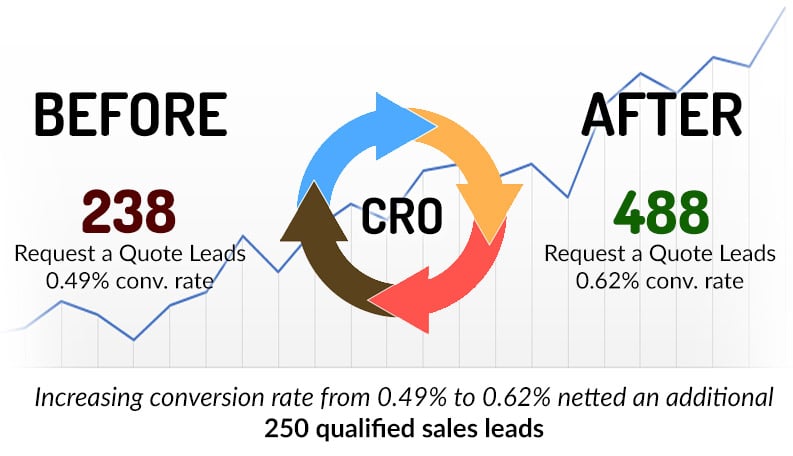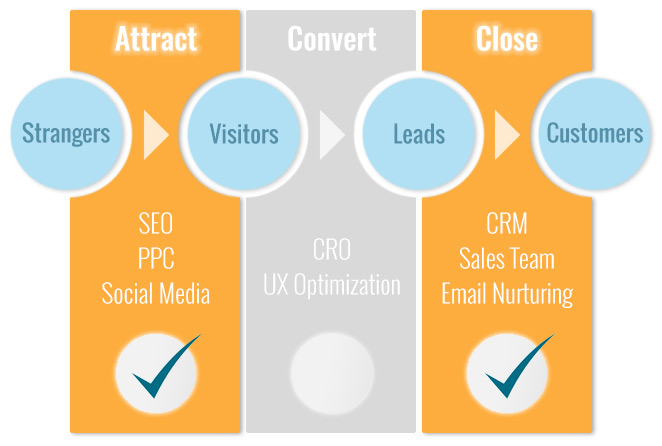DON’T LET GOOD TRAFFIC GO TO WASTE
You’ve invested in growing relevant inbound traffic, but what happens to those users after they land on your site? Conversion rate optimization (CRO) bridges the gap between your inbound campaigns and your sales team.
 What is CRO?
What is CRO?
Page One’s specialized CRO process collects and leverages data to make iterative improvements to your website’s usability and conversion potential. By utilizing a truly data-driven approach, we can suggest and implement changes that will make your website better at moving visitors down the marketing funnel.
What’s a conversion?
A conversion represents the transition of a user from a visitor to a lead or customer. This is a crucial step in the inbound marketing funnel that takes strangers and turns them into either customers (eCommerce) or contacts (lead gen) that can be nurtured by your internal sales team. Conversions can include but are not limited to:
- Form submissions
- Phone calls
- Quote Requests
- eCommerce purchases
Ready to learn more about how CRO can benefit your business?
Why CRO?
CRO is a digital marketing channel supercharger, increasing the output and potential of your investments. Whether you are driving traffic through SEO, PPC, referrals, or any other channel, you can benefit from CRO. When all the pieces of your marketing funnel are in place you’ll be able to achieve maximum ROI and profitability!
Consider this example of a Page One client who more than doubled their quote request leads over 12 months with an SEO campaign to drive more traffic and a CRO campaign to facilitate conversion.

The Page One CRO Process
1. Collect data
Utilizing a number of state-of-the-art tools, we collect detailed data on the way your website is performing and how users interact with it. This step may involve everything from basic engagement metrics to detailed heatmaps and individual session recordings.
2. Identify opportunities
Collected data is used to identify bottlenecks in your site’s user experience. These bottlenecks represent opportunities to reduce friction in the conversion process, making your site both more user-friendly and conversion-focused. The suggestions we make can be anything from simple layout changes to detailed interruptive modal strategies targeting specific user groups.
3. Test & measure results
Suggested changes are rolled out and carefully analyzed to ensure the desired objective is met. We may use anything from simple A/B testing to multivariate testing through Google Optimize to ensure the changes we make are beneficial and effective.
 What is CRO?
What is CRO?